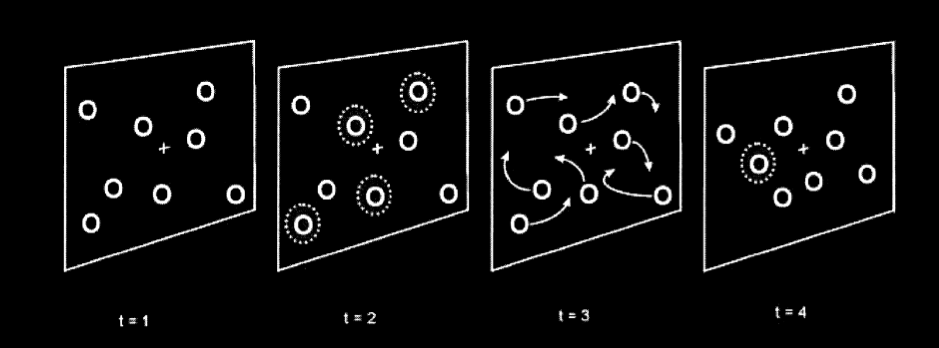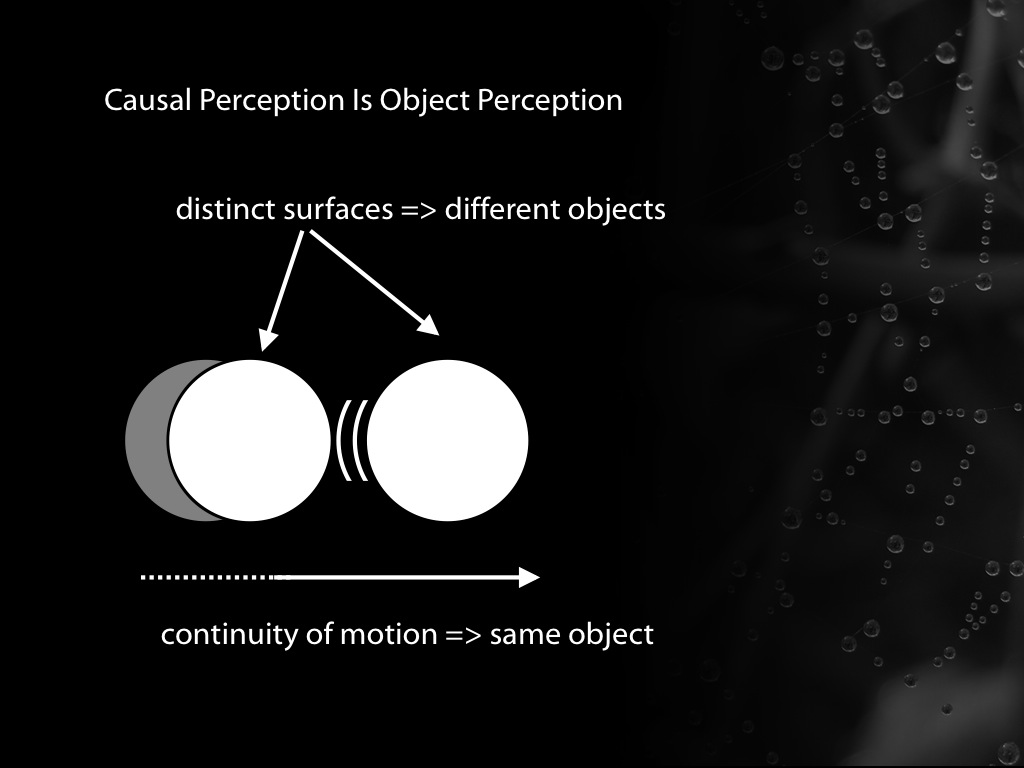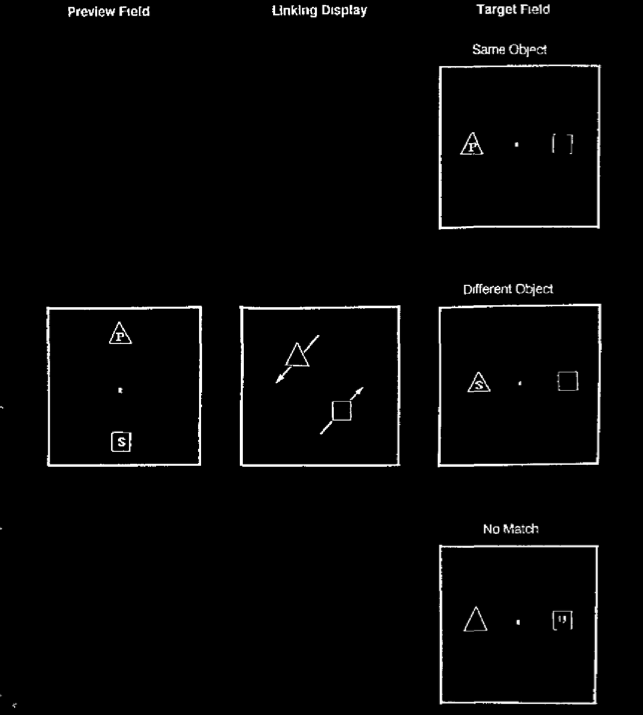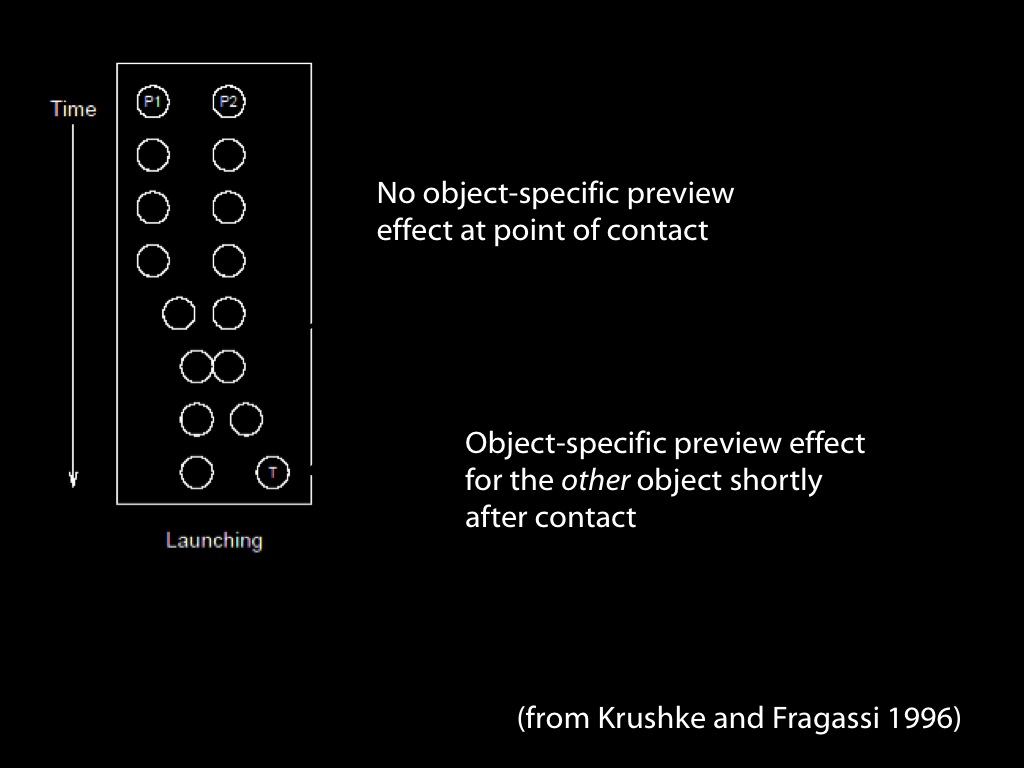Press the right key for the next slide (or swipe left)
also ...
Press the left key to go backwards (or swipe right)
Press n to toggle whether notes are shown (no equivalent if you don't have a keyboard)
Press m or double tap to see a menu of slides
Object Indexes and Causal Interactions
Attention to Objects

Pylyshyn 2001, figure 6
object index (/ FINST)
object indexes require segmentation
object indexes can survive occlusion
object indexes require tracking some causal interactions ...

- How is launching detected? For example, does it involve perceptual processes?
- Why is a delay of up to around 70ms consistent with the launching effect occuring?
‘anyone not very familiar with the procedure involved in framing the physical concepts of inertia, energy, conservation of energy, etc., might think that these concepts are simply derived from the data of immediate experience.’
\citep[p.\ 223]{Michotte:1946nz}Michotte (1946, p. 223)
Can humans perceive causal interactions?
Perceptual systems identify certain kinds of causal interaction in the course of tracking objects.
further evidence
object-specific preview effect

Kahneman et al 1992, figure 3

Causal interactions are detected by the perceptual processes involved in segmenting and tracking objects.